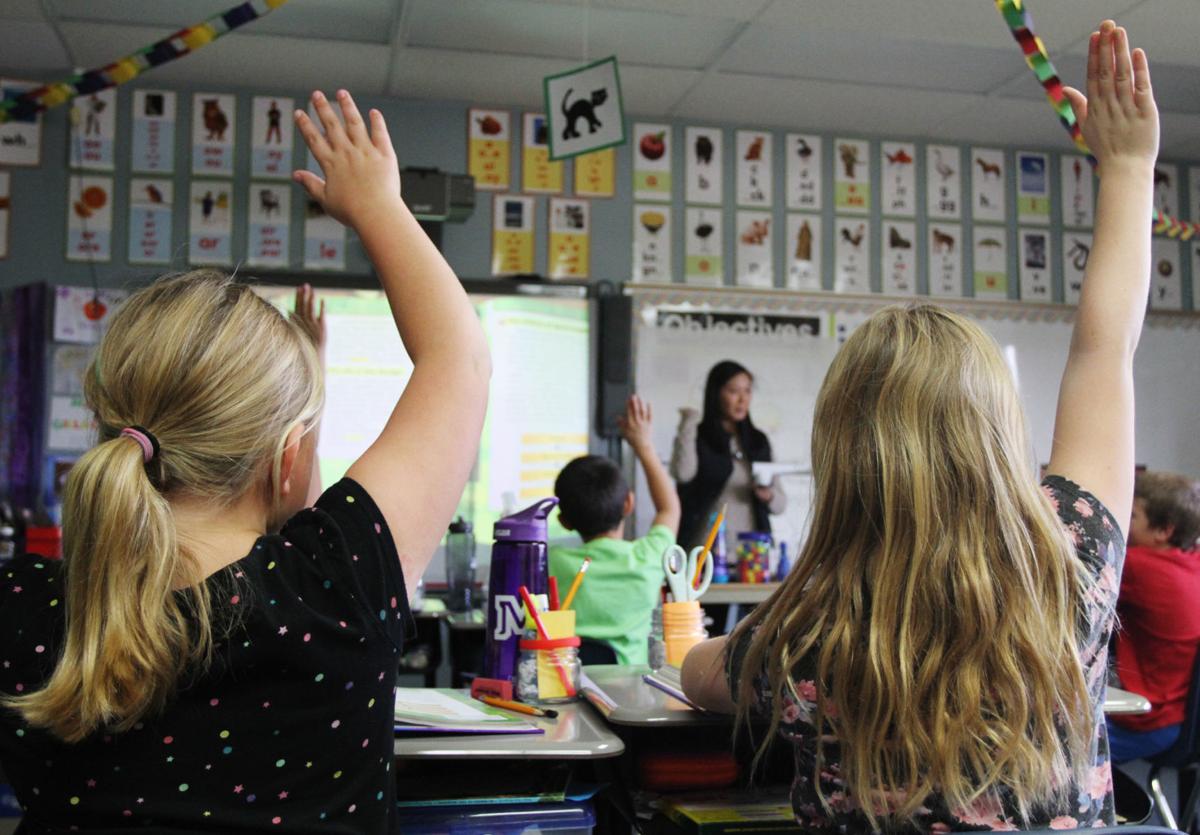Arizona public school children showed small gains on this year’s AzMerit tests, as the number of students passing the annual English and math test grew by one and two percentage points respectively.
Still, only 41 percent of students statewide passed either portion of the test, which was administered last school year.
AzMerit, like many standardized tests, has been criticized by scholars and policymakers as being overly reflective of a student’s socioeconomic status.
Race, family income and and ZIP code are among the strongest indicators of whether a student passes or fails the test.
Homeless students, for example, were half as likely to pass the tests as the general population, while students with disabilities, migrant children and those with limited English scored even worse on both math and English.
Asian students were most likely to pass both portions of the test, with 68 percent passing English, and 73 percent passing math, followed by white students with 55 percent passing both assessments.
There’s a huge chasm between Asian students and the lowest performing performing racial subgroup, Native Americans, of whom only 18 percent passed the English portion, and 21 percent passed math statewide.
Hispanic students were about 10 points below the statewide average, with passing rates for math and English at 31 and 30 percent, respectively.
Only 28 percent of African-American students passed the English test and 26 percent passed math.
And gender matters as well. While girls and boys scored evenly on math, 8 percent more girls passed the English portion of the test than boys.
Pima County students lagged slightly behind the state average, with 38 and 39 percent of students passing the math and English tests, respectively. Overall improvement in Pima County schools also lagged slightly behind the state average, with students overall gaining 1 percentage point over last year’s scores in each category.
Those local scores were once again dragged down by the county’s two largest school districts, Tucson Unified and Sunnyside Unified.
In TUSD, only 30 percent of students passed the English test, and 29 percent passed math.
Scores at Sunnyside, which covers some of the poorest neighborhoods in Tucson, were even lower, with just 24 and 26 percent of its students passing the English and math tests, respectively.
Still, both districts improved slightly from last year. TUSD students jumped two percentage points in both categories, roughly on par with statewide improvements, while Sunnyside students gained one percentage point in English, though the scores remained flat on the math portion of the test.
And even within a single school district, disparities between schools can be stark.
TUSD’s University High School, which requires students to take an entrance exam, saw 98 and 96 percent of its students pass the math and English portions of the test, respectively.
TUSD’s highest-scoring high school without an entrance exam, Sabino, scored slightly above the state average on the math portion, with 46 percent of its students passing, but just met the state average of 41 percent passing in English.
Nestled in a much poorer neighborhood about 10 miles south of Sabino, TUSD’s lowest performing high school, Santa Rita, saw just 9 percent of its students pass the English portion of the test, and only 7 percent pass the math portion.
And those low scores at Santa Rita High are actually an improvement over last year’s scores of just 6 percent passing English and 2 percent passing math.
Students in the Catalina Foothills Unified School District, on Tucson’s wealthier north side, did the best of any district in the county, with 71 and 68 percent of its students passing the math and English tests, respectively.
Vail Unified School District, in a well-off community just southeast of Tucson, wasn’t too far behind, with 66 percent of its students passing the math test, and 61 percent passing the English test.
Those districts, however, have far lower percentages of economically disadvantaged and homeless students, as well as students with disabilities and limited English than TUSD or Sunnyside.
Compare populations at Sunnyside where 24 percent of students passed the English portion of the test, to Catalina Foothills, where 68 percent passed.
The district boundaries are only about 10 miles apart, but financially, the two districts are worlds apart.
More than 80 percent of Sunnyside students tested were economically disadvantaged and 3 percent were homeless, compared to Catalina Foothills, where only 15 percent were economically disadvantaged, and fewer than 10 students were homeless (the actual number is so small it is redacted to preserve student privacy in test results provided by the Arizona Department of Education.)
Racial demographics at Catalina Foothills, 60 percent of students tested were white, 25 percent were Hispanic and another 7 percent were Asian. Demographics at Sunnyside are considerably different — 89 percent of students tested were Hispanic, 4 percent were white, and 3 percent were Native American.
At Catalina Foothills, only 2 percent of students taking the English test had limited English proficiency, compared to 13 percent at Sunnyside.
Charter school students statewide outperformed district school students by almost 10 percentage points, with 50 percent of charter students passing the English test and 49 percent passing the math test.
However, there were huge gaps between high-performing charter schools, some of which have been accused of discriminatory admissions processes, and lower performing charters that admit higher numbers of economically disadvantaged and racially diverse students.
Students do not need to pass AzMerit to graduate or to be promoted from grade-to-grade, but the tests make up a large portion of schools A through F letter grades issued by the state, and teachers are awarded performance pay, depending on district policies, based on test scores.





